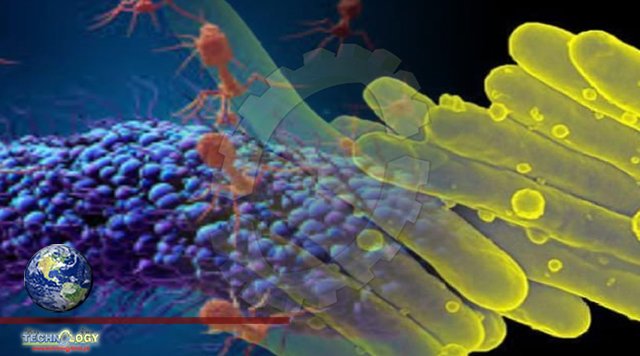Twenty complex, antibiotic-resistant lung infections were treated by researchers using bacteria-eating viruses; there were no negative side effects, and more than half of the patients treated had favorable clinical results.

Bacteria-Eating Viruses , Researchers from the University of California San Diego School of Medicine and the University of Pittsburgh, leading an international team of researchers, present encouraging findings from the largest case series of patients treated with bacteriophage treatment for antibiotic-resistant infections. Patients with cystic fibrosis or other chronic disorders that harm or destroy the lungs’ bronchi—the network of tubes that carry oxygen and other gases throughout the organs—are more likely to get non-tuberculosis Mycobacterium (NTM) infections. Constance Benson, MD, professor of medicine and global public health at UC San Diego School of Medicine is the co-corresponding author of the study. Credit: UC San Diego Health Sciences The findings were recently published in the journal Clinical Infectious Diseases. Non-tuberculosis Mycobacterium (NTM) infections are increasingly common among patients with cystic fibrosis or other chronic diseases that damage or destroy the lungs’ bronchi — the network of tubes that transport oxygen and other gases throughout the organs. Due to bacterial resistance to antibiotics, which have long been the standard of care, treating NTM infections is challenging, especially those brought on by Mycobacterium abscessus.
Bacteria-Eating Viruses , According to the Centers for Disease Control, 35,000 people die each year in the United States as a consequence of roughly 3 million infections that are resistant to all antibiotics. Viruses known as bacteriophages have developed to specifically target and destroy certain bacterial species or strains. Wherever bacteria live, phages may be found in greater numbers than all other living forms combined. They were first identified in the early 20th century, and since then, as antibiotic-resistant bacteria have grown and spread, more and more research has been done on them to determine their medicinal potential. In 2016, scientists and physicians at the UC San Diego School of Medicine and UC San Diego Health used an experimental intravenous phage therapy to successfully treat and cure colleague Tom Patterson, Ph.D., who was near death from a multidrug-resistant bacterial infection. Patterson’s was the first documented case in the U.S. to employ intravenous phages to eradicate a systemic bacterial infection. Subsequent successful cases helped lead to the creation of the Center for Innovative Phage Applications and Therapeutics (IPATH) at UC San Diego, the first such center in North America. We think this is a revolutionary topic and study that evolved from our original Tom Patterson case report,” said co-corresponding author Constance Benson, MD, professor of medicine and global public health at UC San Diego School of Medicine. “It promises to be highly cited as we at IPATH and others work on expanding the uses of phage therapy.”
Bacteria-Eating Viruses , Currently, those uses are limited, in part because each phage species seeks and destroys only one bacterial species and the current armamentarium of known therapeutically useful phages is relatively small. As a result, phage therapy testing is currently constrained to experimental treatments where all other viable alternatives are failing or have failed. The new study involved a cohort of 20 patients with complex, antibiotic-refractory mycobacterial infections. All of the patients exhibited varying underlying conditions; most had cystic fibrosis (CF), an inherited, progressive disease that causes severe damage to the lungs and other organs. Currently, there is no cure for CF. The average lifespan for persons with CF who live to adulthood is approximately 44 years. Participating patients in the study qualified under the U.S. Food and Drug Administration’s “compassionate use” provision, which allows testing of investigational drugs or products for life-threatening conditions when no comparable or satisfactory alternative therapies are available. Benson, co-corresponding author Graham F. Hatfull, Ph.D., Eberly Family Professor of Biotechnology at the University of Pittsburgh, and colleagues screened 200 patients with symptomatic lung disease to identify bacterial strains likely to be susceptible to phages and identified 55 strains. Phages were administered to the 20 study participants intravenously, by aerosolization through a nebulizer, or by using both methods twice daily over an average course of six months, though some patients had shorter or longer treatments based on clinical or microbiologic response. Patients were monitored for adverse effects, signs of symptomatic improvement or reduced bacterial presence, the emergence of phage resistance, and/or neutralization of phages by the patients’ immune systems.
Source: This news is originally published by scitechdaily